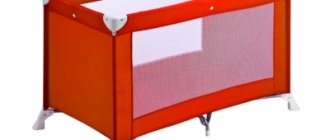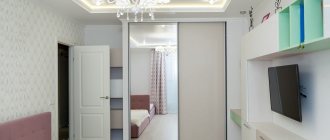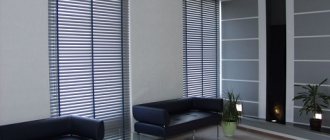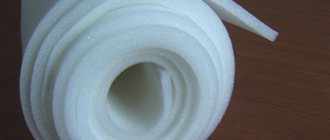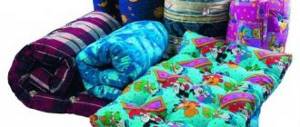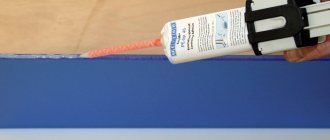Choosing bed linen: main characteristics
A truly good bedding set can be identified by the textiles it was made from. Please note how the product is packaged. The packaging should not be deformed, open, or have any damage or scratches. This says a lot about the manufacturer and supplier itself. The sticker contains valid information about the manufacturer: enterprise address, batch number, production date and methods of contacting the official supplier or manufacturer. The container itself in which the kit is packaged has a uniform color and the presence of a brand mark.
The canvas must be intact, without various puffs, protruding threads and holes. At the same time, the fabric itself should not tear, show through when stretched, or lose its original shape.
The most important thing is the degree of density of the fabric, i.e. the number of threads used per 1 square centimeter of fabric. A good choice would be a set made of thick textiles. Thus, the linen will not cause discomfort during sleep and will not lose its original quality after the first wash.
Important! Durable, high-quality textiles have a high density.
The best option to buy is a standard bedding set, which includes classic-cut pillowcases, a “closed” duvet cover, and a sheet with an elastic band. The dimensions of this linen will always fit any perimeter of the bed, thanks to the adjustment using an elastic band on the sheet.
The designs on the products are clear, using pastel shades. If, however, the print is applied abundantly, then it may subsequently fade when washed or stain the body. Also try to avoid laundry with foreign odors. This may indicate improper storage conditions, and therefore a deterioration in the quality characteristics of the product. In some cases, such products with strong aromas cause allergies and skin irritation.
How to choose bed linen
When choosing bedding, you need to pay attention to the structure of the fabric and its appearance. Bed linen should provide maximum comfort, so it should be quite soft and pleasant to the touch. The sheet should not bunch up on the bed, calico or chintz should not rustle, and, of course, should not fade or shrink.
We advise you to carefully study the information on the packaging. On each package you should find information about the composition of the fabric, the dimensions of the bed linen set, data on hygienic certification, compliance with GOST and TU.
Bed linen must be beautiful and “Shuya Calico” cannot sell either wholesale or retail, KPB without branded packaging and logo, relevant details and certificates. The packaging always contains all the manufacturer’s details, quality and dimensional characteristics of the bedding set. There must be a certification mark (PCT), which means that the product is certified and complies with sanitary and hygienic standards and other parameters related to bed linen.
Which bed linen to choose depending on the type
Elite
Bed linen can be considered elite if:
- For its production, only first-class fabrics from luxury manufacturers are used, which prevents rapid wear of the linen and the development of allergic reactions;
- quality of tailoring and print;
- variety of price categories and varieties.
Luxury products are made from expensive fabrics. For the most part, natural silk, bamboo and linen predominate. Elite jacquard and Egyptian cotton are expensive sets, have increased density and beautiful designs.
Important! When choosing luxury bedding, base it on the size of the bed. Most of them are calibrated using a standard parameter.
Budget
The most common and popular option. Most buyers opt for an inexpensive price tag and inconspicuous design. From fabrics we can recommend:
- calico;
- percale;
- poplin;
- cotton + satin.
The main advantage is long wear resistance and resistance to hard water. The designs remain bright for a long time, the canvas itself is of average strength.
Children's
Bed linen for a child differs from all others by using hypoallergenic eco-friendly fabrics in the production, regardless of the price tag and manufacturer. Used fabrics:
- calico;
- satin;
- chintz;
- percale;
- cotton 100%;
- cotton + polyester.
The last two materials are perfect for the youngest children, as they are soft and have a low density, which is necessary for the baby’s sensitive skin.
Important! It is not recommended to choose a bed for babies and preschool children with a too bright, colorful print. Allergies appear from the abundance of helmets.
What bedding to choose for children
Tissues surround the child literally from the first minutes of his life. His bed becomes the first area of his research: pictures and drawings on bed linen often become characters in children's dreams. For very young children, it is better to choose fabrics in light, pastel colors.
For older children, the choice of underwear and its color may be determined by the character of the child, girl or boy. In most cases, girls dream of a bedroom “from a fairy tale” or “like a doll’s”, preferring feminine shades: pink, beige, cream, etc. Girls prefer romantic and delicate floral arrangements to all designs. All children love bright characters on bed linen, heroes of their favorite cartoons, fairy tales, birds and animals.
Options for choosing bed linen
Before purchasing a new bedding set, you should decide on its purpose. That is, purchase a classic set for traditional use, to add beauty, or give it as a gift. In each case, you will find what you need in a certain style, at the required properties and at the required cost.
Additionally, you should determine the necessary material properties that the purchased set must have. Namely, its degree of density, brightness of shades.
Pros and cons of satin bed linen
The fabric has both positive and negative characteristics. Before making a choice, you need to familiarize yourself with them in more detail. Satin bed linen has the following advantages:
- does not wrinkle;
- silk shine of the front side;
- high wear resistance;
- there are no allergens in the composition;
- environmentally friendly fabric;
- low thermal conductivity;
- withstands 300 washes.
Among the disadvantages are:
- relatively high cost relative to cotton products;
- in summer it can be hot to sleep on it;
- for some, an unpleasant smoothness.
Which bedding is better, poplin or satin?
These days, both options are in demand. In order to understand which type is better, you need to know their differences from each other. Among the most important are:
- Density
_ Bed linen made of satin wins in this indicator, poplin is a lighter fabric. - Softness
. Here the leader is satin, it is much softer to the touch. - Tactile characteristics
. Satin resembles silk, which is why it is ahead here too. - Drawing
. A pattern is formed on the satin during the manufacture of the material. Poplin is dyed in its finished form. - Number of washes
. Poplin loses in this indicator with 200 cycles.
Common characteristics include:
- high thermal conductivity;
- good air permeability;
- high hygroscopicity;
- long-term wear resistance;
- environmental cleanliness;
- durability.
Which bedding is better, calico or satin?
These fabrics are also often compared in an attempt to determine the leader. Calico is a cotton fabric that has a perpendicular weave “thread through thread”. The composition may contain both natural and synthetic fibers. Calico is practical for everyday use. Natural dyes are used for coloring. Satin bed linen, unlike calico bed linen, is more expensive not only in cost, but also in appearance. In addition to this, matter has differences:
- Satin underwear is smooth and slippery
. Calico sets do not slip and are more durable. - The fabrics have different technologies for weaving threads
. As a result, calico is matte, and satin is glossy. - Fabrics vary significantly in price
. Calico is an economical option, and satin is an expensive product.
Satin and calico bed linen have similar characteristics:
- low rate of creasing;
- maintaining bright color after repeated washing;
- lightness and hypoallergenic material;
- environmental cleanliness;
- ease of care;
- hygiene.
Which bedding to choose depending on size
To determine the appropriate size of the bedding set, you should take the following measurements:
- the width and length of the blanket;
- the width and length of the pillow;
- mattress dimensions.
Pillowcases are divided into rectangular and square depending on the parameters of the pillow. For example, a 60x60 pillowcase will fit perfectly with a square pillow, and 52x72 will fit perfectly with a rectangular one.
The duvet cover should not fit tightly to the blanket. You need to select a product 5-8 cm wider to make it easier to put on and convenient to use. The sheet should be selected according to the same properties. You can also use the following formula to calculate the ideal parameters of the product: for example, the width of a non-standard mattress is 180 cm, and the length of two sides is 30 cm. This leads to the formula - 30+30+180=270. Therefore, 270 cm is the optimal sheet length for your mattress.
All sets are sewn according to classic measurements - 180x210, 200x220, so in most cases they do not fit on the bed and quickly tear or become deformed. Also, do not rely on standard labels on the packaging (1.5 bedroom, 2 bedroom). Use your own bed measurements as a guide. This will help you choose the right underwear that fits all parameters.
Bed linen sizes
| Name | Bed sheet (cm) | Duvet cover (cm) | Pillowcase (cm) |
| Single | 110 x 200 | 135 x 200 | 50 x 70 |
| One and a half | 150 x 215 | 150 x 215 | 70 x 70 |
| Double | 180 x 215 | 180 x 215 | 70 x 70 |
| Double Euro (Mini) | 220 x 240 | 180 x 215 | 70 x 70 |
| Eurostandard | 220 x 240 | 200 x 220 | 70 x 70 |
| Euro (Maxi) | 220 x 240 | 220 x 240 | 70 x 70 |
| Family | 220 x 240 | 150 x 215 | 70 x 70 |
| Children's | 100 x 150 | 112 x 148 | 40 x 60 |
| For babies | 100 x 135 | 100 x 135 | 35 x 45 |
What fabric to choose for bed linen
Textiles used for tailoring must meet all quality standards and buyer requirements. What are the main qualities when choosing a suitable canvas?
Ventilation
Natural fabrics such as cotton, linen and silk have excellent breathability. That is, air circulates regularly, takes body temperature, creating comfortable conditions for sleep.
Strength
Durable fabric is resistant to periodic washing and wear-resistant. A set of delicate, soft fabric loses its original appearance after the first wash on a standard washing machine program, when a highly durable product does not accept any changes.
This fabric does not fade, does not wrinkle and retains heat for a long time, which is necessary during the harsh, cold winter.
Important! You should not purchase underwear made from too thick fabric in the summer. During sleep you will feel discomfort and your skin will not breathe.
How to choose the perfect bedding
Many more materials are used in the production of bed linen, which means choosing the best one will not be easy. In order not to get confused about the characteristics of the fabric, perform 7 manipulations during the purchase:
- Feel the underwear. The fabric for everyday use should be dense but comfortable. It will be comfortable to sleep on this, and the set will last longer. If you are choosing accessories for a special occasion, just look for high-quality jacquard, percale or silk from trusted sellers.
- Take a sniff. We remember that good things have only a light textile aroma. A pronounced chemical smell indicates aggressive dyes, mustiness and dampness - improper storage.
- Examine the seams. Don’t be shy, ask to straighten the sheets and duvet covers. They should be made of solid fabric, with neat stitches and without protruding threads.
- Evaluate the quality of coloring. It is better to focus on natural shades of fabric. But if you choose a bright print, look at the reverse side of the material. The color should be almost as intense as the front one. Go over the last one with a damp cloth and test the fastness of the dye.
- Inspect the packaging. Find fabric composition, density, care instructions, sizes and number of parts of the set, address and phone numbers of the manufacturer. Make sure that the package or box is intact, neat and consistent with the status of the kit. Expensive underwear should be in luxury packaging, cheap underwear should be in simpler wrapping.
- Pay attention to seasonal recommendations. Not all materials are universal for winter and summer. For the warm season, it is better to take linen, chintz, and silk. For cold weather - microfiber, terry, flannel.
- Consider who you are buying bedding for. An adult, healthy person can sleep on any fabric used in production, sometimes feeling only discomfort. But choosing a material for allergy sufferers, people with sensitive, irritated skin and children will have to take more time. All-natural, hypoallergenic, pleasant to the body and undyed ones like bamboo are suitable.
Which bedding from expensive fabric to choose
The most optimal is a set made of natural satin without impurities. Textiles differ from silk in their strength and density. Expensive fabric has thermoregulation and a pleasant appearance. Does not shrink during the first wash and does not wear out quickly with frequent use. Thanks to its matte finish, it does not wrinkle, does not slip, and does not cause discomfort.
A bamboo bedding set is an option for people with a tendency to allergies and skin irritations. Does not roll down, does not slip, made from antibacterial raw materials. Due to its elasticity, air circulates well and does not absorb sweat.
Popular silk is a very expensive fabric, especially the Japanese version, made by hand. Such fabric should be washed only on a gentle wash cycle, avoiding sudden temperature changes and the appearance of stains. Also, the kit is only suitable for summer, as it does not have heat resistance and good temperature regulation.
Important! Silk is one of the most pleasing fabrics, despite its high cost and luxury.
Top 12 materials for bedding sets
Choosing a leader in home textiles is not so easy. The best fabric for linen depends on the requirements that a person places on the sets: price, wear resistance, pilling, washing and ironing conditions. The rating of materials turns out to be quite extensive - study the properties of each item and purchase the most suitable option.
No. 1. Satin
If you are choosing the perfect bed linen and are wondering which fabric to choose, we recommend choosing satin. It is the one most often used in hotels due to its practicality and wear resistance.
The double weave of twisted threads makes the material very durable. The set lasts 3-4 times longer than calico linen. It is expensive, but cheaper than silk. Although it resembles it in appearance and tactile sensations - satin is glossy and smooth.
Satin linen is resistant to machine washing. Sheets and duvet covers retain their color, practically do not wrinkle, and do not pill. And good thermal conductivity, breathability, and hygroscopicity ensure comfortable sleep at any time of the year.
No. 2. Silk
High-quality silk sets are not available to everyone. Natural canvas is expensive, but the body will be as comfortable as possible on such material. Silk is smooth, but not slippery. Cool in feel, hypoallergenic, helps in the treatment of certain skin diseases.
High-quality fabric is very dense, so it has a long service life. The color does not wash out, there are no pills on natural canvas. It is capricious when ironing, but if you get used to it, there will be no problems.
Note: It is not easy to distinguish good silk from bad silk by appearance. If the kit is suspiciously cheap, refuse to purchase. The artificial body slides, the linen fades and becomes covered in pellets. It will be uncomfortable to sleep, and the set will quickly lose its attractive appearance.
No. 3. Calico
If you plan to save money, buy calico. This is the cheapest natural option presented. The material – cotton made from thickened thread – is durable and practically does not deform. It sheds slightly during washing and is difficult to iron when dry.
This calico set is suitable for adults and children. The fabric is hypoallergenic and does not cause irritation.
No. 4. Jacquard
This is another representative of the luxury class. Jacquard sleep accessories have a relatively high cost and luxurious appearance. Due to the complex weave of threads, cotton fabric has an unusual texture and excellent properties for bed linen. Sheets, duvet covers and pillowcases made of jacquard do not shrink, do not lose shape, and do not fade.
The material also has disadvantages: the set is probably difficult to care for. It is usually recommended to wash jacquard at a temperature no higher than 30 °C and dry it away from sunlight. And in order not to accidentally damage the fabric, it is better to iron from the wrong side.
No. 5. Poplin
In terms of density, poplin is between satin and calico. The feel and properties are similar to the latter material, but it has threads of different thicknesses in the weave and therefore receives a peculiar relief. The surface shines a little, seems soft and delicate. Sleeping on poplin sheets is very comfortable, especially in winter.
This is an option for those who are not used to caring for textiles. Poplin duvet covers and pillowcases are unpretentious: they are easy to iron and do not have any special requirements for washing.
No. 6. Linen
In terms of softness, linen is inferior to the previous options. Natural fabric is dense, rough, and cool in feel. Keeps you from freezing in winter and overheating in summer. Hypoallergenic, absorbs moisture well and remains dry.
It may shrink during washing; you should follow the temperature conditions indicated on the labels. Ironing is difficult - if you don’t like this activity, take a closer look at other materials or look for a mixture with the addition of 30% cotton.
No. 7. Bamboo
Bamboo is more expensive than calico and poplin, but in terms of physical properties it outperforms almost all competitors on the list. The material is soft, smooth and tactilely pleasant. Valued by allergy sufferers and people with sensitive skin. The kits have a natural antibacterial effect and do not cause irritation.
With proper care, linen retains its original appearance even after hundreds of washes. The fabric does not shrink, does not absorb odors, and does not pill. The only thing is that the colors of the sets will not suit every interior. Natural bamboo linen is not dyed and is left light green.
No. 8. Percale
Percale duvet covers, sheets and pillowcases come with a hefty price tag, but are worth the investment. Due to the peculiarities of production, the fabric turns out to be incredibly durable - it can survive up to 1000 washes. Over time, it does not fade, does not shrink, or fade. Suitable for bedding with feather filling - feathers do not pass through the glued fibers.
No. 9. Flannel
One of the cheapest and most short-lived materials. It loses its shape, becomes covered in pellets and gets washed out. But it is easy to iron and does not require special care. It feels very soft, slightly velvety and warm. Suitable for cots.
No. 10. Ranfors
It is a more modern analogue of calico. The weave of ranfors is denser, but the threads are thinner. The fabric is durable and soft at the same time.
Due to the cotton composition, it has all the qualities of natural fabric: breathability, hygroscopicity and thermal conductivity. It practically does not wrinkle and does not impose any special requirements on the washing regime. At the same time, it retains its original appearance for a long time.
The only disadvantage in comparison with calico is the cost of ranfors. The kits are expensive, although they last a long time.
No. 11. Tencel
In addition to bamboo, eucalyptus fibers are used in production - it is from them that Tencel is obtained. The fabric feels like silk, but the properties are like natural cotton. Tencel is hypoallergenic, allows the skin to breathe and prevents the body from overheating. Easily washed and not deformed.
No. 12. Batiste
Accessories made from cambric are not easy to find. It is used mainly in decorative sets such as wedding ones and for sewing children's underwear. The material is incredibly soft, light, but durable. But this does not make the kits durable. Batiste is afraid of frequent washings - by the hundredth it literally falls apart into threads.
Which fabric to choose for bed linen depending on weaving
Chintz
Tops the rating of budget kits. The material does not require special care, is hypoallergenic and breathable. Due to its low density, it has a simple print with minimal use of paint.
Chintz wears out too quickly and shrinks. The fabric wrinkles and pills.
Calico
One of the most stable and wear-resistant options. It is easy to wash, does not form pills, does not wrinkle. The material is made from an environmentally friendly composition, hypoallergenic, does not fade. Products made from calico can be soaked in stain remover and washed in very hot water.
The downside is that it is unpleasant to the touch. High density gives a rough, matte surface, which can be uncomfortable the first time you use this linen.
Satin
Hypoallergenic, eco-friendly fabric is suitable for people with sensitive skin. Irons well, does not form pills, wear-resistant. Despite its average density, chintz is breathable and has thermoregulation. One of the main disadvantages is its high cost and poor resistance to household chemicals. That is, such bed linen cannot be bleached or soaked in stain remover.
Poplin
The most pretentious and “demanding” fabric. For such fabric, careful care and hand washing are important. But it is also very durable and dense. Wear-resistant, hypoallergenic, soft. Does not wrinkle, but may shrink and fade.
Advice! Poplin products should be washed in water at room temperature using a minimal amount of cleaning powder.
Percale
Dense, hygroscopic textiles. A percale bedding set is perfect in the hot summer, as the fabric absorbs sweat and does not stick to the skin or wrinkle. Soft, but does not allow feathers or dust to penetrate inside.
Jacquard
In other words - 100% cotton. Eco-friendly material with pompous prints and a luxurious look will appeal to lovers of aesthetic designs. With regular, proper care it will last a long time. Does not fade, because it does not contain bright colors.
The fabric is extremely delicate, prone to snags and protruding threads. After washing at high temperatures, it may shrink and wrinkle.
Important! Jacquard sets are often found in luxury hotel rooms and premium apartments.
Comparison of different fabrics with each other
Satin or percale
Satin bed linen looks “more expensive” than percale bed linen. But the price of satin is higher than percale. Satin shines in the light due to double weaving of threads. The shine on satin can vary depending on the quality of the threads. For example, there are budget options for satin lingerie, the shine of which is not as pronounced as that of luxury lingerie sets.
Percale fabric is pleasant to the touch, just like satin. In terms of strength, percale is not inferior to satin fabrics. In addition, percale bed linen hardly wears out.
In fact, the materials do not differ in strength and quality. The only difference is that percale is a velvet fabric, and satin is a beautiful bed linen.
Poplin or percale?
Poplin is thicker than percale, but poplin is less durable. The small thickness of percale is due to the use of thin threads in the composition. The strength of percale is achieved due to the checkerboard weave of the threads.
Both materials are natural and environmentally friendly, as they are made from cotton.
Calico or percale
Percale fabrics are almost no different from calico fabrics. Percale is thinner and more comfortable to the touch. At the same time, the small thickness does not affect the strength; percale is a fairly strong material
Calico, like percale, contains natural cotton. This means that both conduct air well, do not wrinkle, do not require special care, and retain heat for a long time.
Calico or poplin
Both materials have a similar weave. In poplin the threads are of different thicknesses, in calico the thickness of the threads is the same. Different thicknesses of threads give poplin roughness. Calico fabric is smooth to the touch and retains its appearance longer. Poplin material has a long service life.
Satin or poplin
Satin fabric has a pleasant shine due to the twisted threads; the material itself is very smooth. Poplin fabrics have a rough surface.
Satin is a durable material with a long service life. Does not lose its characteristics after washing.
Satin or calico
Bed linen made from calico is cheaper than sets made from satin. The only differences between them are in appearance. Satin looks noble, calico looks a little simpler. Otherwise the materials are quite similar. Both are durable, pleasant to the touch, and protect heat.
Which linen to choose depending on the finish of the bedding
Linen must match the parameters of bedding. To prevent the sheet from crumpling and causing inconvenience, you should opt for a product with a thick elastic band. This solution will help for fixation.
Snaps, zippers or buttons on products prevent inconvenience in use. No need to worry about the blanket coming out of the laundry or turning into a big lump. At the same time, the pillows will be tightly fixed, which will give more comfort to sleep.
The only negative is that the zipper may break and the buttons may fall off during washing. Therefore, the best option for many years has been properly sewn products with fabric bookmarks.
Advantages and disadvantages
Considering that calico is an exclusively natural material, it is highly valued and has a number of advantages:
- High degree of strength, retains its original appearance throughout its service life;
- It is highly hygienic and can be easily washed with various detergents;
- Do not accumulate static electricity;
- Easy to iron;
- Prevents the reproduction and formation of pathogenic bacteria and mechanisms on it;
- It practically does not wrinkle during use;
- When using aggressive detergents, significant damage is not caused to either the pattern or the fabric;
- The products do not shrink and retain their shape for a long time;
- Requires minimal maintenance and is durable;
- Drawings applied to the canvas do not fade under the influence of sunlight and retain clear lines and brightness for a long time;
- Does not cause allergic reactions;
- In the cold season it warms perfectly, and in the heat it absorbs sweat, thereby creating a feeling of coziness and comfort;
- Low cost;
- Depending on the density of the fabric, daily sets and holiday sets are distinguished.
Despite a number of undeniable advantages, there are also disadvantages, among which the most significant are the following:
- The appearance of pellets over time, the formation of which occurs due to compactions in the threads;
- To the touch, bedding may seem slightly rough and harsh;
- May lose elasticity and smoothness when in contact with synthetic materials.
Important! People with sensitive skin types should avoid calico sets.
Bed linen made from calico has a very presentable appearance and is perfect for daily use. A variety of colors and designs will satisfy even the most demanding customers.
How to wash satin bed linen?
The fabric is unpretentious, so it does not quickly lose its quality with frequent use and multiple washes. On average, about 300 cleaning processes can be carried out without loss of color and shine. When choosing a washing temperature, it is important to consider the specific type of material:
- plain satin bed linen up to 95°C;
- with color and pattern up to 60°C;
- luxury linen about 40°C.
Let's look at how to care for satin bed linen during washing:
- All fasteners are closed, and the products are turned inside out.
- It is prohibited to combine satin bedding and items made of other materials in one wash. A rough cloth will damage the smooth surface and make it rough.
- For washing, you can use any conditioner.
- After getting wet, satin increases in weight and volume, this must be taken into account when loading the drum.

